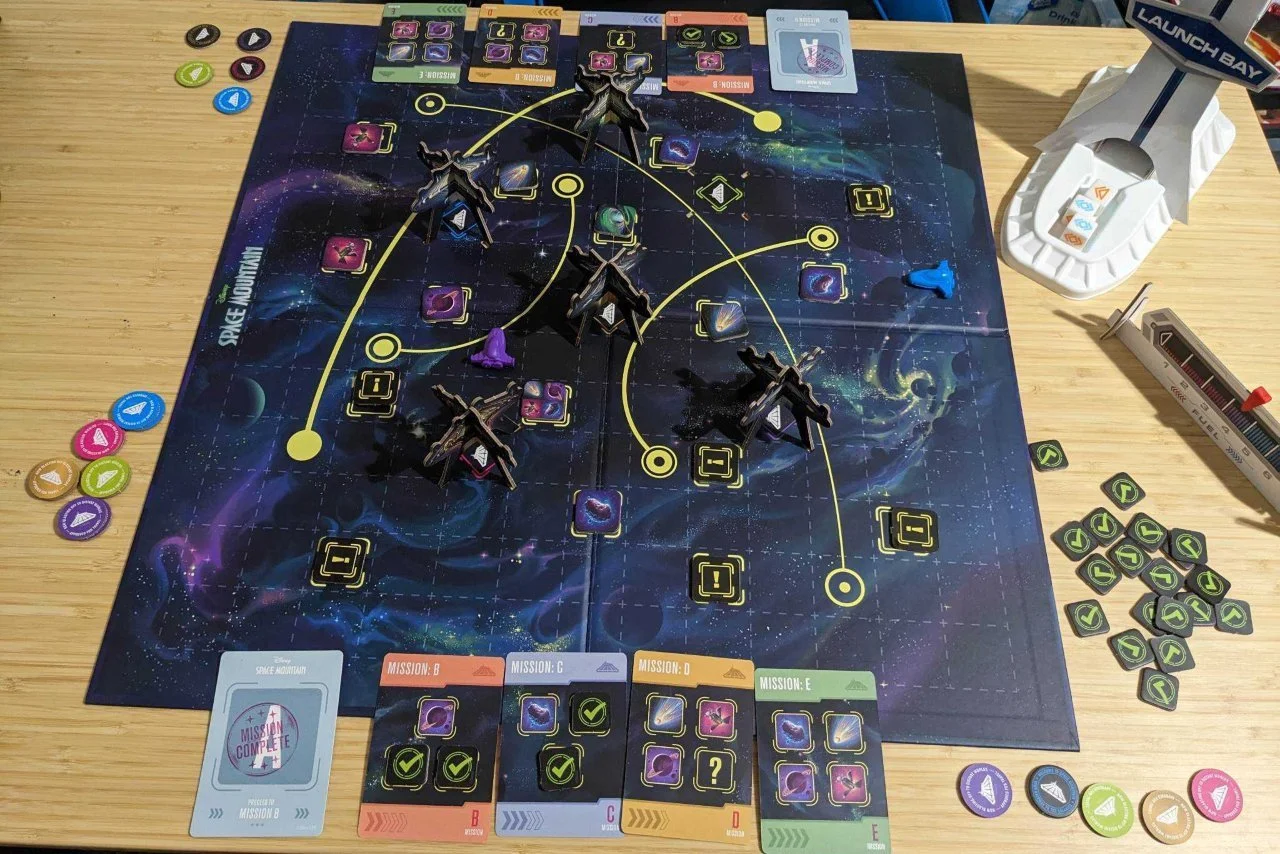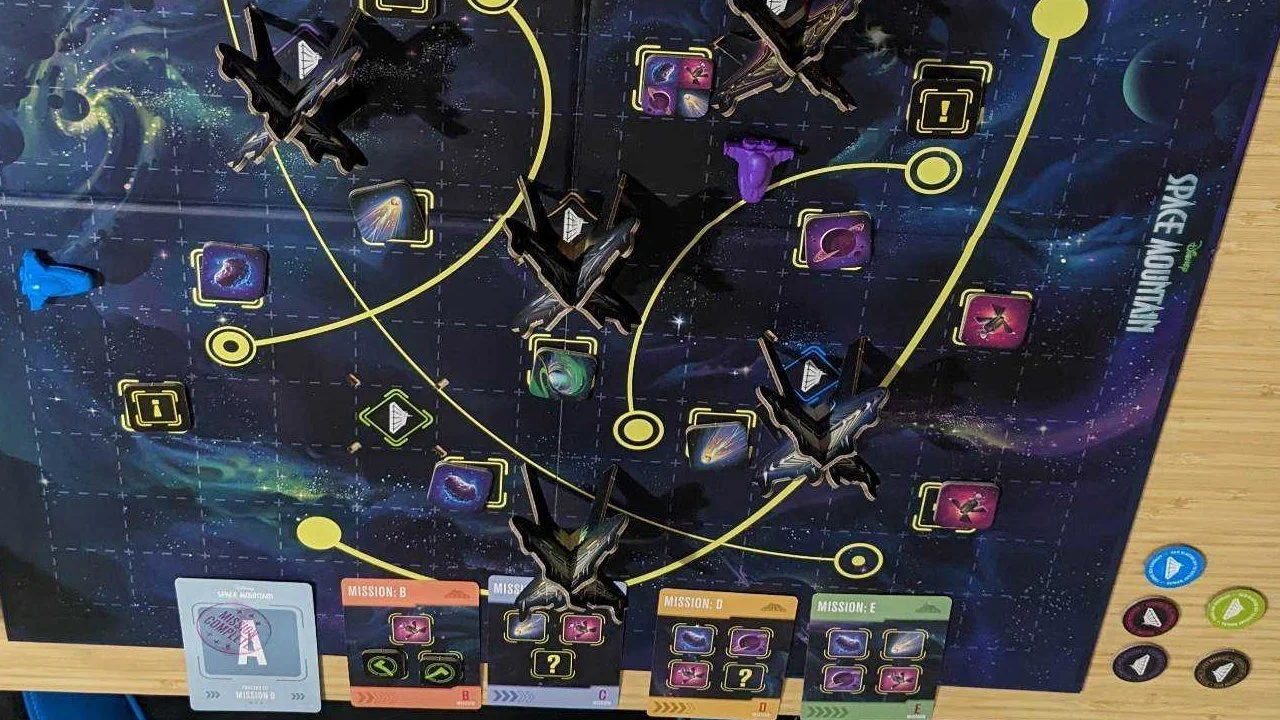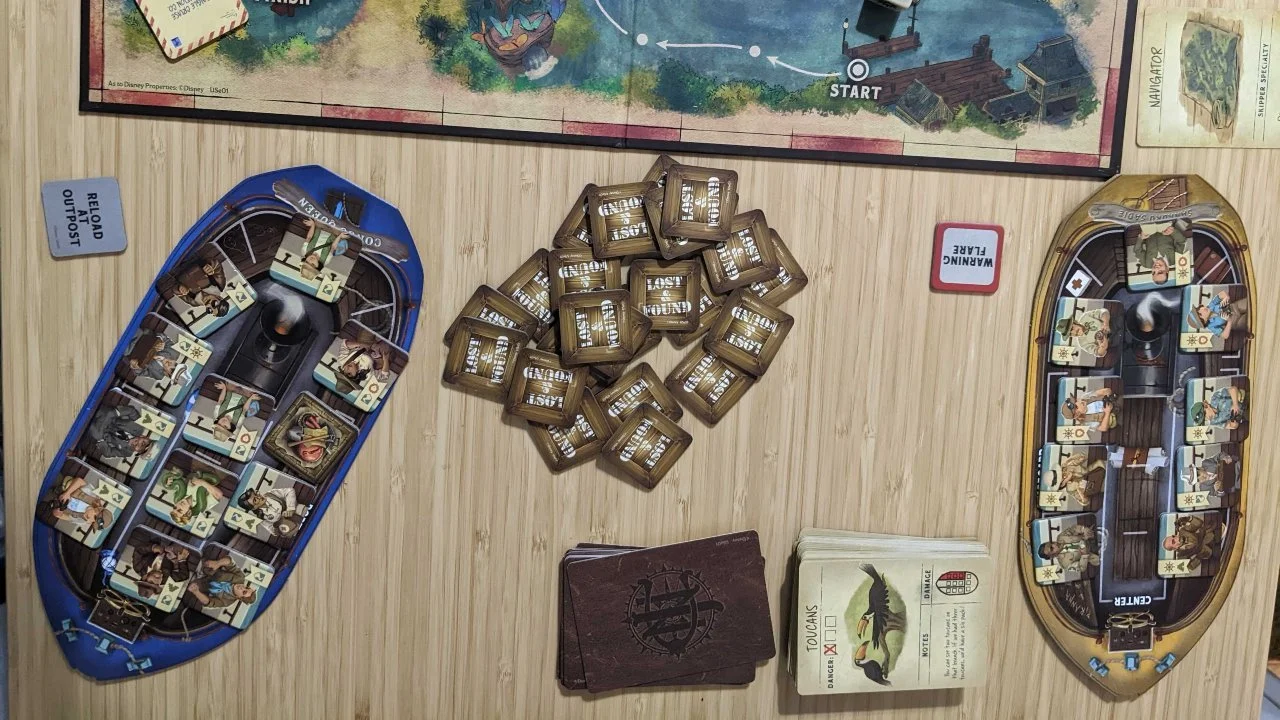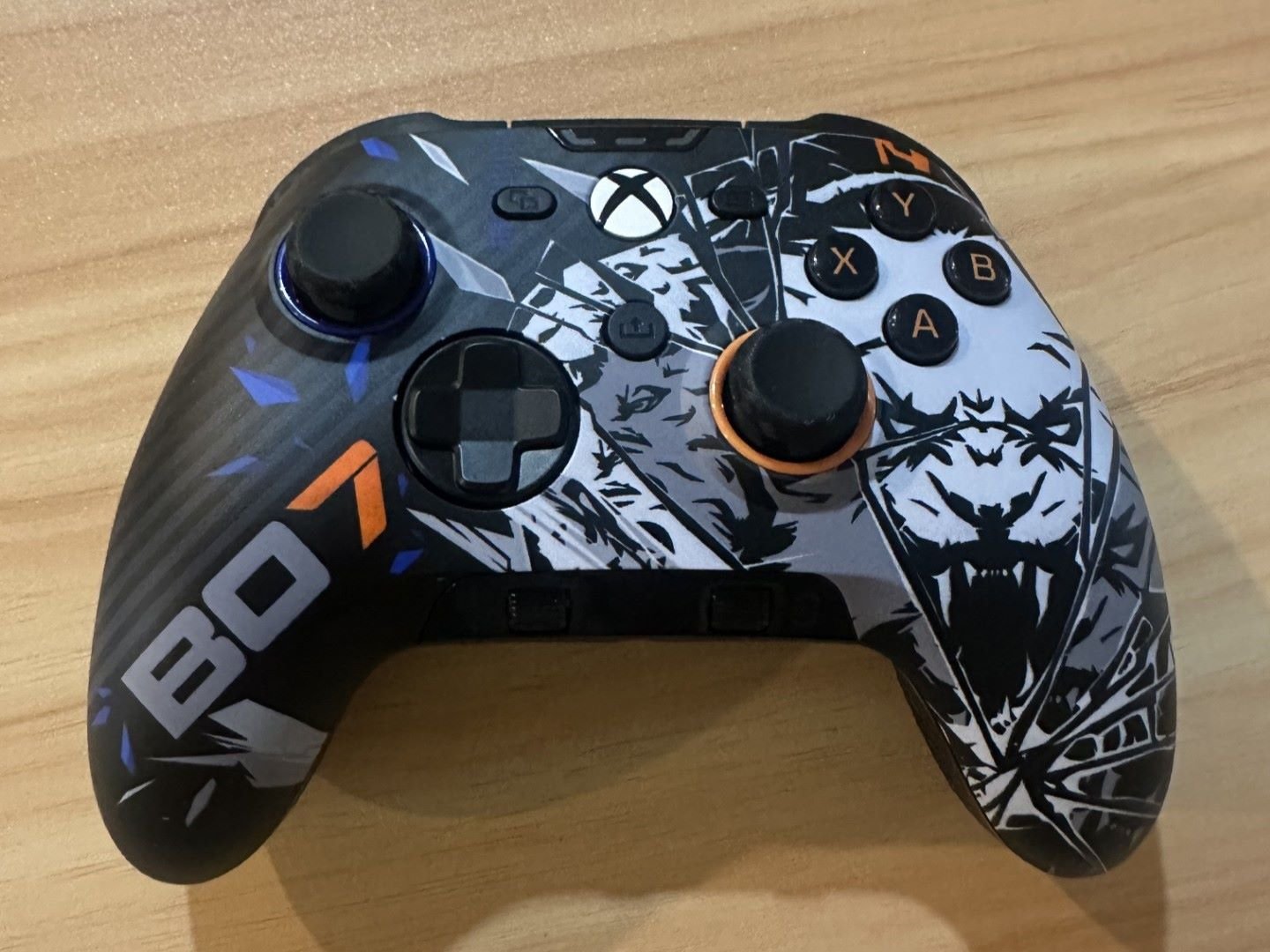Product Provided by Ravensburger
Creating a board game based on the lore of the popular Walt Disney World ride, Space Mountain, turns out to have been a great idea! Space Mountain: All Systems Go by Ravensburger is a wonderful tribute title for the 1975 classic coaster. Given this delivers a different form of attraction than the ride, the real question is whether or not it holds its own level of entertainment when being played.
Gameplay
Once again, we are faced with a difficult-to-begin but easy to play once understood board game. There are a lot of pieces to punch out of the cardboard cutouts that come with the game, but once you get all of the tokens and spaceships out of their slots, you can put them together to form the board. Once you have the cards, tokens, and dice launcher put together, you are ready to set up.
Here’s the setup to get the game started. Each player picks a ship color and then put their ship on the matching color starport. Then, every player gets one mission from cards A, B, C, D, and E. Get your dice launcher standing, put the fuel gauge to full, place a [!] token on each marked location on the board, and grab the three-set dice.
The goal of the game is pretty simple. You have two tasks: visit all five starports and complete all of your mission cards. While you can visit the starports in any order, you have to complete your missions in alphabetical order. The only way to turn in a completed mission is on a Refuel or by visiting the appropriate starport color it is for. To help clarify; A is blue, B is red, C is purple, D is orange, and E is green. Even if you don’t have a mission to drop off, passing through a new starport will allow you to flip their colored token over to ‘All Systems Go’ mode, meaning you can now use that starport as a starting point.
To take a turn, you put the dice in the launcher one at a time. This will show you your movement, if any fuel is used, and in what order you can move. There are only two options, a double arrow forward or a diamond with an arrow on either side of it. Double arrow forward notates that you will move forward two spaces and the other symbol indicates that you will move forward one and turn either left or right one space. Seeing how this affects your pathing, this is why you need to do the dice in order as they are rolled. For each orange movement die, you move the fuel meter one spot.
Keep in mind, those yellow lines on the board are wormholes! This means if your ship touches a yellow dot, it will have to travel the wormhole and continue its turn from the exit port, still facing the way that it entered the wormhole. This can be a positive or negative experience, depending on what you are working on getting to.
The fuel meter is shared among all players and so if it reaches 1, all players run out of fuel and are sent back to a friendly starport of choice. If you had any progress on your missions, it is wiped away. At least all of the encounters you, and the other players, have visited are now showing so you can start targeting your path a little more to find the encounters you need for your current mission.
If you are worried about losing your progress, you can always Refuel instead of taking a turn. This means you are going to sit out until the other players either Refuel as well or end up busting from using all their fuel. If you are Refueling when the other players bust, you are safe while they lose their progress.
Artwork
The artwork for this board game is actually kept pretty simplistic. There are only four different encounter options that are clues and they each look very distinct from each other. Their ‘any encounter’ token is just all images on one token in mini form and a non-hint encounter that sends you to a starport of choice (must be friendly). The most detail is in the little ships, the board, and the dice launcher. These aspects together really bring the space aesthetic together and even include it in the core gameplay.
Replayability
Just like most board games, there is plenty of replayability built into the game. The randomization of the dice and encounter locations changes all the strategic choices you make throughout the game. There is even a possibility for the game to turn out to be a draw on the off chance that both players finish their starports and missions on the same turn (which almost happened during my review play sessions, might I add)! Even for a simplistic design of a game, they did a great job providing enough options to really mix the game up each time it is played.
What It Could Have Done Better
Some minor complaints would be that the instructions for the game could have been a little bit clearer. I commend them for taking the summarized style and having an instruction book that is literally just two pages put together, but they could have used another page to go deeper into each aspect of the game. There were a handful of times that we had to find information on a question by putting pieces of information from different parts of the instructions together.
As for my bigger complaints, the design of the ships and the dice launcher was a bit less than impressive. Many board games like to have stand-in figures to help build out the aesthetic of the game, but those are usually put in areas of the board that aren’t actively in place. This game has players set five ships on the board that are only a couple of inches tall and players are supposed to have their ships fly underneath them. This very quickly became a hassle to the point that we removed the ships from the board completely during play. Then there is the dice launcher, which is soft plastic on the bottom and cardboard on the top. If you are going to make this a core aspect of the game, put some effort into the material so that it stays together better! We were constantly fixing the dice launcher as it only took a small tap to pull it out of the base a slight bit, quickly leading to it not dropping the dice properly. Given the rules say you have to use the dice in the order they come out of the launcher, the only option left when the launcher doesn’t work is to roll one die at a time for the order of movement. The dice launcher is a nice feature, so I don’t know why it isn’t made with harder plastic to help hold its frame better.
Verdict
Space Mountain: All Systems Go is a great way to experience the world behind a classic Disney ride! The gameplay goal is a challenge that makes every choice really feel like it counts and the constant threat of losing all your progress, even if it isn’t your fault, brings a thrill that keeps players on their toes. Sure, there could have been a better touch of quality put into the contents, but when it comes to the experience this game provides, it’s an easy go-to title to suggest for friends.
Space Mountain: All Systems Go is available now in retail stores, such as Amazon, Target, and more.






















